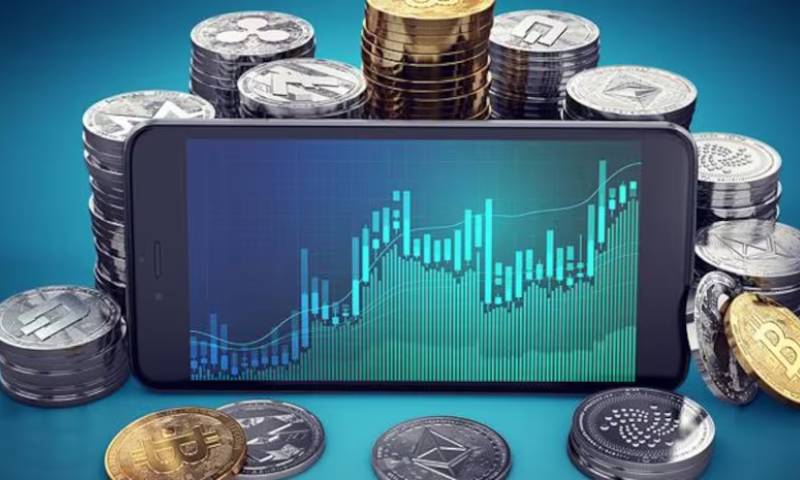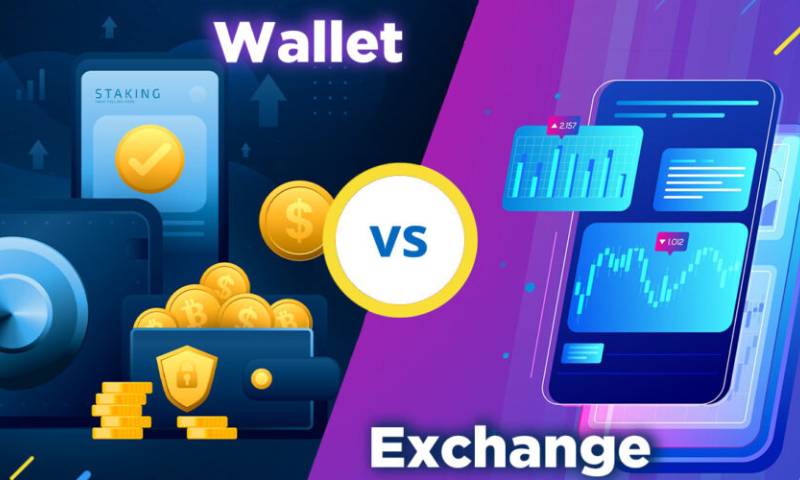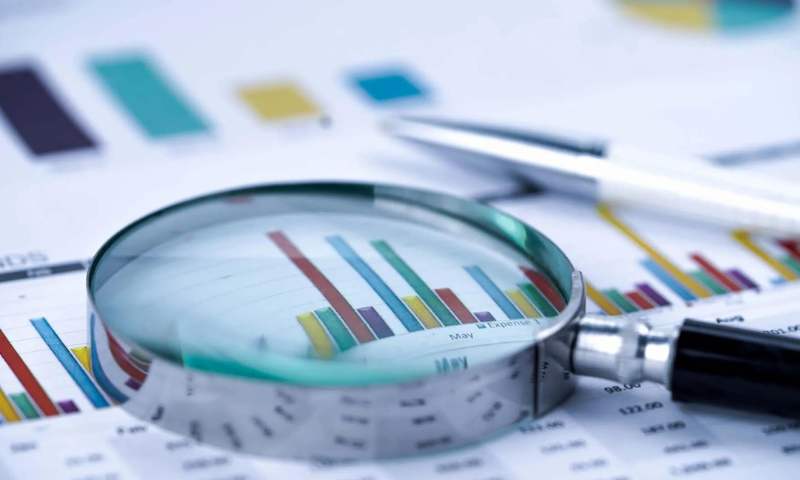In the whirlwind world of cryptocurrencies, savvy players compare crypto exchange trading volume to spot the giants. Whether you’re a seasoned trader or new to the blockchain beat, understanding this can make or break your market moves. Here, I dive into the sea of digits to reveal who truly leads the pack. We’ll chew over why those numbers matter and how they can guide your next savvy investment. So buckle up as we uncover the top market movers that shape your crypto journey.
Assessing Market Liquidity Through Trade Volume Analysis
The Importance of Trading Volume in Understanding Market Liquidity
Trading volume tells us how much a coin was traded. It shows if a market is alive. High volume means many people buy and sell. It’s like a busy market with many shops. Low volume is like a quiet place. Few people come to buy or sell.
Why does volume matter? It helps people see how hard or easy they can trade. A coin with high volume is easy to buy or sell. It does not change the price much. This is called market liquidity. A liquid market is good. It means you can trade without waiting.
Now, we have tools to see trading volume. Use charts that show volume at crypto exchanges. These charts help us compare. They let us see which exchanges move big amounts. This is vital for making smart choices.
Identifying Trends with Comprehensive Trade Volume Metrics
To find trends, we look close at trade volume metrics. These numbers show us where the action is. We see spikes and drops over time. This info hints at what could happen next.
Volume trends in crypto guide us. They tell us if a coin is getting popular. Or if it’s losing steam. A sudden jump in volume can mean big news. It could be a new project or a big deal.
We use volume-based exchange comparison. It puts exchanges side by side. We see who leads the pack. Leading cryptocurrency platforms stand out. They push most trades. Knowing this helps us choose our exchange.
Exchange trade volume ranking also shows key figures. These are the exchanges that set the pace. They can sway prices. Their moves can make waves across the market.
We track 24-hour trading activity. It gives us a fresh look each day. All kinds of traders need this. Day traders, long-term investors — all of them.
When analyzing exchange flow, we dig deeper. We learn how coins move in and out. We spot patterns. Big buys, big sells — they make ripples.
Measuring liquidity depth in the crypto market is tricky. But we must do it. We need to know how deep the water is. It tells us how big trades can go without trouble.
Use crypto exchange volume data to stay ahead. It’s your map in the wild crypto world. Know where you’re going. Keep your eyes open. Remember, volume shows the heart of the market. It beats loud in busy exchanges. Listen to it, and you’ll find your way.
The Impact of Trading Volume on Cryptocurrency Pricing
How Volume Fluctuations Influence Crypto Prices
Let’s dig into how busy trading days sway crypto prices. Picture a bustling market. When more people buy and sell, prices move sharply. It’s like a crowded market where everyone’s haggling. That’s the crypto exchange volume analysis. Busy trade days push prices up or down fast. It’s a tug-of-war, more players, more action.
In the crypto world, this action is key. Big moves in trade volume often hint at price shifts. If many hop onto a coin, its price likely climbs. Low volume can mean small price changes. Think of trade volume like a megaphone. The louder it gets, the more folks listen and react.
Now, look at the leading cryptocurrency platforms. They’re often the loudest megaphones. With tons of traders, they can steer where prices head. You’ve got to keep an eye on them if you want to catch the wave or dodge a tumble.
Comparative Analysis of Volume Impact Across Different Crypto Assets
Not all coins feel volume changes the same. Compare Bitcoin and lesser-known coins. A small jump in trades for Bitcoin can mean little. It’s a big ship, hard to steer. But toss the same volume at a small coin, and watch it fly or sink fast.
Comparing crypto assets teaches us a lot. It shows how size and fame shape their rides on the volume wave. Larger assets with deep market liquidity bob gently. Smaller coins might surf or wipe out.
Take Ethereum, for instance. It’s a big name, yet not as hulking as Bitcoin. Shifts in trading volume can rock its price more. But it’s still steadier than many altcoins out there.
Volume isn’t just about counting trades. It’s a real clue to what’s up or down in the crypto sea. High volume crypto exchanges often lead the charge. They show us the busy hubs where coins can soar or swoon with the trading tide.
For smart trade choices, we’ve got to watch volume like hawks. We’ve got to see where it leads or warns us in the market dance. It’s a volume-based exchange comparison game, folks. It gives pros a peek into the future of prices.
Seeing real-time exchange volumes helps, too. It’s like having a superpower to catch every beat in the heart of the market. It’s all about grabbing insights and getting ready for the next big swing.
To sum it up, trading volume is a big deal. It tells tales of coming storms or sunny days in crypto land. By keeping tabs on volume spikes and falls, we gear up better for whatever’s next. So let’s ride the volume wave smart, keeping our eyes peeled on the ever-moving crypto market.
Exchange Volume Rankings and Their Significance
Volume-Based Exchange Comparisons: Spotlight on Major Players
Let’s dive into the busy world of crypto exchange volume analysis. We want to spot major players right away. Think of exchange volume like a busy market. Some markets buzz more than others. They do more business every day. It’s like that with leading cryptocurrency platforms too. The ones with the most action offer clues. They tell us where people put their money. And they show us trust in those spots.
How busy these places are matters a lot. It shows market liquidity indicators. A liquid market lets you trade without moving the price too much. Big trade volume metrics indicate this strength. See, when an exchange trades a lot, we call it ‘deep’. Liquidity depth in crypto market terms means the same – lots of trades, without big price wiggles.
But why care about exchange trade volume ranking? Simple. You want to be where the action is. High volume crypto exchanges often equal more stability. And they mean more eyes. This makes trading smoother and sometimes safer.
Monitoring Real-Time Trading Activity for Smarter Investments
Now, let’s talk about watching 24-hour trading activity. Staying on top of this is key. Real-time exchange volumes give us fresh news. This helps us not miss beat. Think about volume trends in crypto. They’re like waves. Catching them at the right time is gold.
Looking at real-time data, we can see volume dominance in crypto. It shows us which exchanges drive the game. Also, we look at trading volume comparison as a habit. It’s not just about the giants. Small movements in spot trading volumes can be telling.
Moreover, we dig into comparative volume charts. These charts lay it all out. They help us see who is up or down. They show exchange liquidity comparison. Such snapshots make it easier to choose where to trade next.
To wrap it up, if you’re into this world, keep close watch on these numbers. They make the ground we walk on in the crypto land. They’re key to seeing the full picture. Whether you deal in BTC, ETH, or altcoins, knowing volumes is your must-have guide.
Trading Volume Significance in Investment Strategies
Decrypting Volume Dominance for Exchange Visibility
When it comes to crypto exchanges, size matters. More volume means big players trust it. This trust draws new users. High volume crypto exchanges top the charts, often referred to as “major exchange volume snapshot,” and the high numbers reflect strong exchange visibility by volume.
As we dive into crypto exchange volume analysis, we learn a lot. Volume tells us much about how an exchange fares in the market. Picture volume as a giant spotlight. The spotlight shines on exchanges where coins often trade. These exchanges are where action happens.
Remember, volume dominance in crypto speaks volumes. It’s like a busy market. More trade volume metrics mean more eyes on the exchange. The leading cryptocurrency platforms with hefty trade volumes become go-to places to trade. This is crucial because a high traffic venue often means better prices and quicker trades for everyone.
Insights on Altcoin Volume Shifts Shaping Investment Decisions
Now, let’s get personal. It’s not just about big coins like Bitcoin or Ethereum. Altcoins – the lesser-known kin – also play a big part. Think of altcoins as indie bands. They might not have huge hits yet, but their dedicated fans trade them keenly. When altcoin exchange volumes rise, savvy investors pay attention. These shifts can be as telling as a new chart-topping single.
For instance, if a certain altcoin starts buzzing with higher-than-usual trading activity, it’s like a whisper in the market starting to grow louder. This chatter could mean something is brewing. Maybe an update, a new partnership, or a budding trend? That’s why we keep a keen eye on altcoin volume shifts.
Understanding these patterns helps us make smart moves. If an altcoin starts showing up more in 24-hour trading activity or in real-time exchange volumes, it might be time to strike. But we must tread carefully – high volume can also mean high risk.
Shifts in liquidity depth in the crypto market affect how we sell or buy. A deep market absorbs big trades without big price changes. A shallow one could mean selling causes the price to drop, or buying pushes it up fast. So, when we analyze exchange flow or study cumulative crypto volume analysis, we’re like detectives. We’re picking up clues to build our investment strategy.
In conclusion, whether we’re discussing ETH exchange volume, BTC trading volume comparison, or any other token trading statistics, the story is clear. Trading volume holds the secrets to exchange health and vibrant markets. For investors and traders, paying attention to these numbers is investing 101. Ignoring them is not just a missed opportunity, but a risk we can’t afford to take.
In this post, we dug deep into why trade volume matters, showing how it points to market health and shapes price moves. We saw that big volume often means high interest in a crypto asset and can signal smart times to buy or sell. We compared how different cryptos react to volume changes, revealing the need to study the numbers. Not all exchanges are equal – high-volume spots often offer better deals and more safety. Knowing this can make you a sharper investor.
We then tackled how volume data feeds into smart investment picks. For the best trading choices, keep an eye on volume trends. Smaller coins with growing volume might be hidden gems, waiting to shine. In all, our journey through trade volume’s twists and turns equips you to play the game smarter, with less guesswork and more wins. Always keep volume in your strategy tool kit – it’s powerful if you know how to use it right. Keep learning, keep trading, and here’s to your success!
Q&A :
How do you compare crypto exchange trading volumes?
To compare trading volumes of different cryptocurrency exchanges, look for the 24-hour trading volume statistics that most exchanges publicly display. Use financial websites, market tools, or cryptocurrency comparison platforms that aggregate this data for an easier comparison. Always ensure that the volumes are in the same currency for a proper comparison. Note that high volume can indicate greater liquidity and potentially lower spread, but also verify the exchange’s reputation and security features.
What factors should you consider when comparing trading volumes on crypto exchanges?
When comparing trading volumes on crypto exchanges, consider several key factors:
- Liquidity: A higher volume often equates to better liquidity, making it easier to execute trades at your desired price.
- Time Frame: Make sure you are comparing volumes for the same time frame (usually 24 hours).
- Currency Pairs: Look at the volume of specific currency pairs you’re interested in, as some exchanges may specialize in certain digital assets.
- Market Fluctuations: Be aware that volumes can fluctuate due to market events, so use an average volume over a period if possible.
Why is it important to know the trading volume when using crypto exchanges?
Knowing the trading volume is important because it reflects the activity level and liquidity of an exchange. High trading volume can indicate a vibrant market with many participants, which can lead to more competitive pricing and easier execution of trades. Low volume could lead to slippage and difficulty fulfilling large orders. It also helps in assessing the popularity and trust in the exchange.
Can trading volume be used to assess the reliability of a crypto exchange?
While trading volume is an indicator of an exchange’s activity and liquidity, it should not be the sole factor in assessing the reliability of a crypto exchange. High trading volumes can be a positive sign, but it’s also crucial to consider the exchange’s security measures, regulatory compliance, customer support, and user reviews to evaluate its overall reliability.
What are the implications of comparing trading volumes for crypto traders?
For crypto traders, comparing trading volumes helps in making informed decisions. It allows them to choose exchanges where they can trade efficiently and potentially with lower fees. High-volume exchanges may offer better price discovery and tighter spreads. However, traders should also be wary of ‘wash trading’—where exchanges inflate volume falsely—as this can misrepresent an exchange’s true liquidity.






